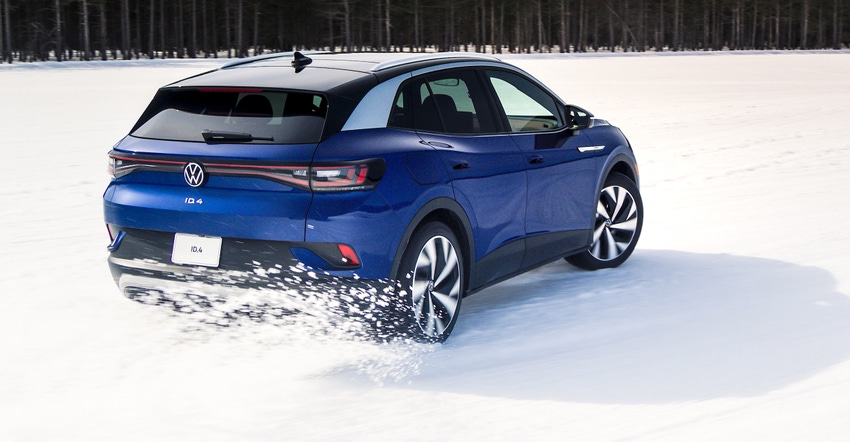Winter has gotten serious in most parts of the country, and it is a good time to think about what that means for cars.

Cold temperatures have significant technical implications for cars, and Volkswagen of America has provided some good reminders of cars’ cold-weather needs.
An important non-technical consideration is the importance of clearing all of the snow and ice from the car before driving. This isn’t for your own benefit, but for that of the people who you might hit because you can’t see them through obstructed windows as well as the drivers whose cars could get smashed by a giant iceberg blowing off your car’s roof.
“Many drivers either don’t know what to do when the weather gets cold or they are in a hurry and take shortcuts,” explains Benjamin Leuchter, Volkswagen Test and Development Driver at the Volkswagen Driving Experience. “For example, they may only clear enough snow from the windshield to barely see out of instead of thoroughly removing snow from the vehicle. That puts both the driver and others on the road at risk.”
Instead of just clearing a spot on the windshield, clean snow and ice from all windows, the side mirrors, headlights, and license plates, he said. Remove snow from the roof of the vehicle, as this snow could hinder the drivers traveling behind you. And if your own well-being is the only consideration, remember that snow on the roof is apt to slide forward under braking, covering your car’s windshield and blocking your own view.
Many SUVs have driver-selectable drive modes that tune the all-wheel-drive system to suit the conditions when it is slippery or there is deep snow. These systems typically also try to soften driver inputs that could break traction. Ideally the driver behaves as if they are trying to avoid spilling a hot coffee by making very gentle steering, braking, and throttle adjustments.
Many cars that do not have bad-weather drive modes do have an economy mode, VW points out, and this has some of the same effect by making throttle response more sluggish. So consider switching to Eco or Comfort mode in slippery weather, if that is an option.
One electronic driver aid to avoid in slippery conditions is cruise control, said Leuchter. That’s because appropriate following distances are much longer than adaptive cruise control is likely to normally employ, so it is better to take charge.
The best solution in slippery weather is to maintain traction, which is most easily accomplished by mounting winter tires during cold weather. This isn’t only for coping with snow. Winter tires work better on ice and even cold pavement than all-season tires.
That’s because winter tires have a softer compound, larger tread depth, and smaller lamella, according to VW’s North American Engineering and Planning Center. This lets them grip the ground and bite the snow better than all-season tires. Of course, you must take them off when winter’s over because their downside is that they tend to “smear” in higher temperatures, which means they feel vague and wear faster. Remember that colder temperatures correspond to reduced pressure in tires, so be sure to stay on top of your car’s tire pressures.
Car batteries hate the cold temperatures too. The battery’s inner resistance, so that for a given current the voltage drops more. As Power = Current x Voltage, the power is less. This is true for peak and continuous power.
That low power could leave the battery unable to start a vehicle or to power accessories like headlights, radios, and power windows, VW points out. An external battery charger can help reinstate lost charge, so if plugging the battery into a charger periodically is possible, consider doing that.
Once started, the engine is also affected by the cold. The engine’s lubricating oil is thicker at lower temperatures and it moves slower through the channels, making it slow to lubricate some areas of the engine sufficiently, said the VV engineers. For example, the engine’s main bearings are actually oil-lubricated bushings, so keeping them supplied with oil is critical.
All of this means drivers should refrain from revving their car’s engine to high speed until it has reached full operating temperature. Otherwise, there could be excessive wear at high rpm if the engine oil has not properly warmed and coated all applicable surfaces.
Further, when the engine’s cylinder walls are cold, fuel doesn’t atomize that well and can wash away the oil film on the cylinder wall and lead to wear of the honed surface. So, just as gentle throttle application is important for preserving traction in the cold, it is also important for preserving the engine in good condition.
Once on the road, the windshield is likely to become smeared with slush and grime. That means it is important to keep the washer reservoir topped up with winter-appropriate washer fluid.
Low-temperature washer fluid has antifreeze like glycol, ethanol, or methanol mixed in to help to de-ice windshields. They freeze up in the reservoir during cold weather. Just as summer tires are ill-suited to the cold, so is summertime bug-dissolving washer fluid. That can freeze in the reservoir or to the windshield glass in cold weather, so it is important to have the right mixture in the washer fluid tank.
With these technical factors in mind, it should be easier to keep your car working as well as possible in freezing weather.
About the Author(s)
You May Also Like





